Phobias associated with people - fear of strangers, drunk, old people, fear of communicating with people, fear of large crowds of people, touching people, losing a person: symptoms, treatment. The list of all human phobias is the most complete.
Being a social being, a person can still treat other people ambiguously. Fear of people - as a form of social fear - is increasingly common in society and affects the mental health of people.
The specifics of anthropophobia becomes clearer if we follow the behavior of a person with fear of people:
- awkwardness(stiffness) of movements and behavioral reactions in public places (“in public”) - it always seems to anthropophobes that they will be ridiculed, something is wrong with their clothes, appearance, actions;
- excessive excitement during or before communication (even ordinary), avoidance of “meeting eyes” - people with a fear of others always experience discomfort when talking with someone (the palms sweat, the heart beats intensely, breathing goes astray), they try to end the interaction as quickly as possible;
- confusion and manners of expressing judgments - such people knock themselves down, jump from thought to thought, drop something or stumble upon something, this makes them even more worried, stammering and confused;
- panic attacks may occur- a feeling of panic is experienced simply from the thought of a possible participation in a social event, about communicating with a lot of people or about a future performance;
- writing "scripts" how to avoid even the very hint of a situation of interaction with others.
Fear of people differs from social phobia in the following ways:
- fear of all people without exception;
- isolation of a way of life, voluntary seclusion;
- excessive control and sensitivity in violation of personal space.
With anthropophobia, another interesting detail of fear can arise - selective fear. It manifests itself in the fear of certain specific individuals: obese women, foreigners, noisy children, loud men, old women, gypsies, homeless people, and so on.
Causes of anthropophobia
The complexity of the uncontrollable fear of people is that it has no clearly defined causes. Psychologists and specialists in the field of psychiatry have long concluded that anthropophobia is a companion of many mental disorders, diseases or disorders.
A kind of catalyst for her "presence" in a man or woman is compulsive behavior, expressed in the performance of obsessive movements, actions and deeds.
The purpose of such acts is the function of protection - from the phobia itself, from the states, emotions, feelings and experiences that accompany it:
- So, a person can be mastered by an unceasing count - being in a crowd, he begins to count the number of people he meets (without stopping, with undying activity).
- The feeling that you can catch some kind of disease from the people around you also indicates the presence of fear of people in the individual. Therefore, any communication is reduced to them “to nothing”, even with relatives, friends or just close people.
Focusing on the causes of anthropophobia, it should be mentioned that it often manifests itself in adolescence, regardless of gender.
The reasons for the occurrence of this type of phobia can be described as follows:
- Children's fears, stresses and psychological trauma. Faced with violence, aggression and other negativity, the child comes to the conclusion that the most comfortable thing for him is to be alone with himself. This pattern carries over into adulthood.
- Intense criticisms and rejection from significant people. This hurts self-esteem, reduces self-esteem to the lowest levels and leads to a defensive reaction - avoiding communication and interaction with people.
- Neurosis with incessant fear get into a mess, embarrassing or embarrassing situation. The constant expectation of such circumstances leads to excessive suspicion and prejudice, makes one adhere to a strategy of isolation from society, social events and performances in front of a large number of people.
- personality traits. Here, the factor determining the fear of people is the psychology of an individual, his specific features that distort the perception of social reality: an introverted character, a melancholic temperament, a tendency to reflection and introspection, features of the formation of a person as a person.
- Influence of stereotypes. Socially desirable qualities are instilled by parents, in childhood: for example, boys should be masculine and unsentimental, girls should be feminine and docile. A discrepancy in the perception of one's own characteristics and characteristics valued in society - if they do not match, leads to a fear of social assessment and communication in general.
How to get rid of fear of people
Anthropophobia is not as harmless as it might seem on the surface. It affects not only mental functions, but also contributes, for example, to the occurrence of cardiovascular diseases (vegetative-vascular dystonia, etc.).
The treatment of fear of people is complicated due to its specificity: already the first step - seeking help from a specialist in overcoming phobias, causes significant difficulties for an anthropophobe.
Lacking proper communication and interaction skills, he becomes increasingly convinced of the impossibility of ordinary social actions, demonstrates antisocial behavior, thereby exacerbating his anxiety and obsession.
The timely intervention of a professional psychotherapist (psychologist or psychiatrist) will help to overcome the fear of people, which will help to establish the correct diagnosis and the root causes of the onset of fear, the selection of an adequate method of confronting fear.
To overcome the fear of other people, you need to take a number of steps:
- First- awareness of the very fact of the existence of fear and its detrimental effect on the personality, recognition of the problem.
- Second- establishing and concretizing the content of the problem (what exactly frightens the most - the people themselves and a large number of them, the fact of the need for communication, etc.).
- The third- search for a way out of a frightening situation. For an anthropophobe, this is an expansion of one's own communication (development of a positive scenario for the circumstances of interaction with other people, conscious encouragement in expanding the circle of contacts).
- Fourth- Consolidation of the achieved results. Communication skills are something that can and should be developed. First, through single actions and successes, gradually expanding their communication capabilities, mastering the potential for successful communication - a person can make fear of people recede.
These steps will face tremendous resistance - it is difficult to master in an instant what a person fears and avoids most of all.
Therefore, you need to train with a gradual increase in load - from a few minutes and small moments, to more global actions in communicating with people and with significant time frames.
An approximate set of techniques and exercises for developing communication skills and interaction with other people:
1. You can start by gradually getting used to the interaction. This is where mediated communication can help. For example, through a telephone - it allows you to communicate anonymously, the reactions of a person with a phobia of people (redness, squeezing improvised objects, jerky movements) on the other side of the line are invisible.
Antrpopfob can call the help desk and find out a few numbers of some firms or consultants. Or inquire about the work schedule of any services (municipal, household). You can also use the information stations to find out the schedule of transport. To simplify the task (at the initial stages), you can write down questions on a piece of paper and simply read them out.
2. To expand interaction with representatives of society, it is necessary to “go out to people”: take a ride on the subway or other form of public transport. Better not during rush hour and not on too busy routes.
You can also observe people, become interested in them - mentally imagine how they "live and breathe." You just need to find a comfortable - from the psychological point of view of a person with a phobia - a place (a secluded corner in a park or a sparsely populated cafe, restaurant) and take a closer look at the people around you, get used to them and become interested in their life.
3. The next step is face-to-face communication. For its implementation, either a familiar person is chosen with whom it is more or less comfortable to talk (someone from relatives), or one of the neighbors or employees. It is not worth planning a long communication right away - a couple of questions and an interested listening to the answers are enough.
4. It is important to find common topics for communication. Any hobby or topic in which the anthropophobe understands and is a specialist will help here. Interest in the content of the conversation will distract from thoughts of anxiety and fear.
5. The next stage in the development of the ability to communicate and interact should be the stage of communication with strangers. You can introduce yourself and start an unobtrusive conversation with a person who is on the way from work or to work, with a neighbor in the area, discuss a play or a film after watching them together.
Anthropophobia can be called a human disease big city(metropolis), where there is a forced need for contact with many people:
- whether for work or personal matters;
- and an elementary meeting with "brothers" in public transport;
- sharing meals in a restaurant or cafe, etc.
The success of the activity in realizing the desire to overcome the fear of people depends on how much a person can set himself up for a comfortable feeling in such conditions.
Video: Social phobia
Symptoms and causes of fear of people. Recommendations for the treatment of mental problems.
Phobia- This is a mental disorder that calls for causeless fear and panic. The most unpleasant thing in this situation is that a person, even with a strong desire, cannot control his emotions and begins to behave not quite adequately.
As a rule, people who have this problem, when they meet their fear, begin to speak inconsistently, lose their orientation in space, or simply try to distance themselves as quickly as possible from the source that calls them fear and panic.
What is the name of a phobia - fear of people?
Anthropophobia: causesanthropophobia is a type of social phobia, which is expressed by the fear of people. Moreover, in this case, the sick person is not afraid of the enemy or some evil person, but absolutely all those who are trying to get closer to him. Most often, men and women suffering from this pathology do not have friends and do not fit well into the team. They prefer to spend their time alone and even go out for food and medicine only as a last resort. Of course, this does not mean that such people generally do not go out into the street.
They may go to work or sometimes go for walks in the park. But at the same time, they will do everything so that other individuals do not encroach on their personal space. That is, at the bus stop they will stand apart from everyone else, and when they come to work, they will immediately sit down in their place and will stop all attempts to communicate. Many psychologists believe that this phobia is most often formed in childhood. The reason for its appearance is not entirely pleasant circumstances. It can be severe psychological trauma, violence, resentment against someone, or even fear.
Having experienced all these unpleasant emotions and not having received support from adults, the child simply closes in on himself and begins to think that in this life you can not trust anyone. If parents do not notice the appearance of such psychological problems in their child, then as an adult, he will definitely try to distance himself from people. With this behavior, he will try to avoid the occurrence of stressful situations.
Fear of communicating with people, fear of talking - homolophobia: symptoms and treatment
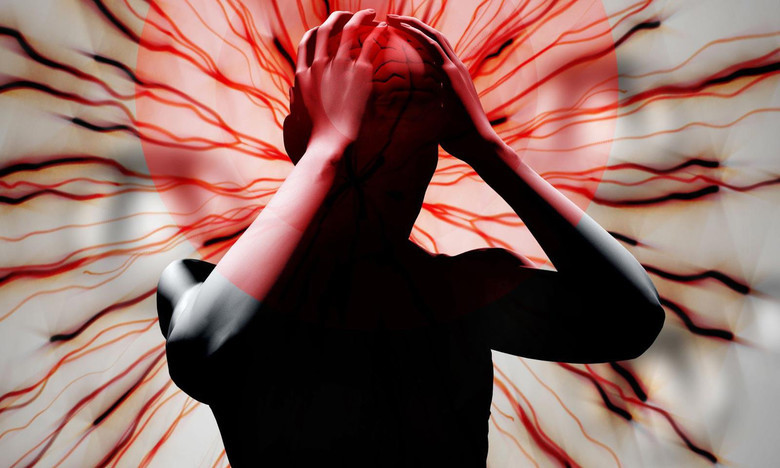 Homilophobia: symptoms and treatment
Homilophobia: symptoms and treatment Homilophobia- This is a phobia that manifests itself as a fear of communicating with people. In this case, a person does not want to talk to unfamiliar men, women, and even children, because he is afraid to formulate his thought incorrectly and be ridiculed by the interlocutor. This psychological illness can develop for many reasons.
It can be unreasonable criticism of parents, grandparents, ridicule of classmates or peers, or a bad start to the most ordinary conversation. Also, the catalyst for the development of this condition can be an unsuccessful public performance, as a result of which a person heard a lot of unflattering reviews addressed to him.
Homilophobia symptoms:
- Increased heart rate
- Dry mouth
- Problems with facial expressions
- Incoherent speech (mumbling)
- Redness of the skin
- Inadequate response to support
Of course, each person reacts differently to an unpleasant situation for him, so one may show all the symptoms at once, while the other may only have, for example, problems with facial expressions and dry mouth. The manifestation of the disease largely depends on what stage it is at. The longer a person lives with this problem, the more violently the patient's body will react to the irritant.
As for the treatment of this pathology, psychologists advise starting to correct a mental illness only after the person himself admits that he has problems. After that, he should gradually begin to learn to communicate with strangers. To begin with, it can be correspondence on the Internet, and then you can move on to talking on the phone.
Well, after the patient's self-esteem rises a little, it will be possible to move on to more real contact, for example, you can try talking to people in a store, pharmacy or park. If everything is done correctly, then over time a person will understand that it is quite easy to communicate with strangers and the phobia as such will disappear on its own.
Haptophobia (afenfosmophobia) - fear of touching people: symptoms and treatment
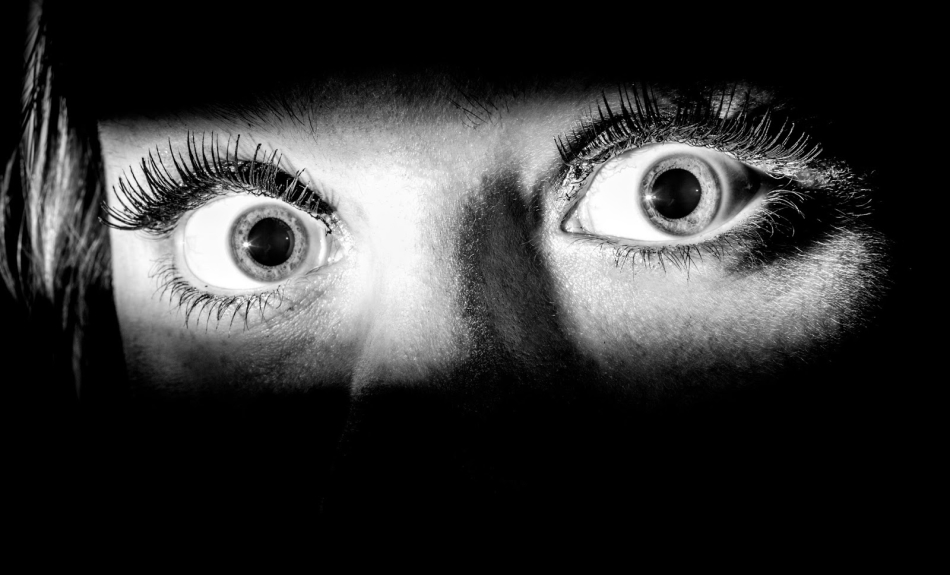 Hapophobia: symptoms and treatment
Hapophobia: symptoms and treatment As you probably already understood, haptophobia is nothing but the fear of being touched by people. First initial stage close people do not even suspect that some kind of problem is developing in their household. At first, this mental disorder is more like a very strong love to purity or simply to arrogance. Such an opinion may appear due to the fact that literally after every handshake or touch, a person runs into the bath and tries to wash away invisible traces.
Of course, the inner circle perceives such behavior as disrespect, and against this background, the distance of once close people begins. In fact, the patient can be very warm to his interlocutor, just in every touch he sees a threat to himself, and that is why he tries to get rid of the traces of touch.
Symptoms of haptophobia:
- The person avoids public places
- Takes a long time to gather his courage before giving a hand to the interlocutor
- Tenses at the slightest contact with a neighbor
- Always rubs hands with wet wipes
- There is unreasonable irritation and disgust
This pathology is treated, like any other phobias, for a rather long time, so you should not expect that literally after the first session of psychotherapy you will be able to forget about your problem. As a rule, at the initial stage, a sick person has to attend group therapy sessions.
And after the psycho-emotional state stabilizes a little, it will be possible to proceed to the so-called shock therapy. The essence of this treatment is that a person visits crowded places every day or goes to pair dance lessons.
Fear of large crowds, crowds - demophobia (ochlophobia): symptoms and treatment
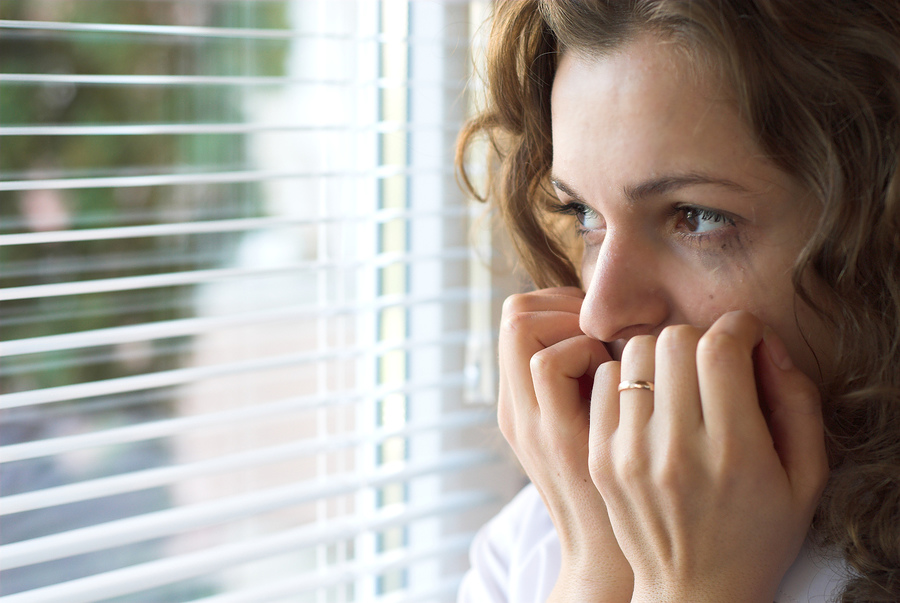 Fear of the crowd: symptoms and treatment
Fear of the crowd: symptoms and treatment Demophobia is the pathology that greatly prevents a person from living a normal life. If it gets worse, the patient may generally refuse to go outside. Some patients suffering from this mental disorder claim that it is not the presence of people on the streets that frightens them, but the fact that too many men and women can injure them or even crush them. It is for this reason that most often they move along sparsely populated routes, trying not to approach the companies that they meet on their way.
Symptoms of ochlophobia:
- Complete disorientation
- Heavy sweating
- incoherent speech
- Hand tremor
- Nervous tic
Getting rid of this pathology is difficult, but still possible. First, you will need to contact a specialist and undergo an examination. If the condition is very aggravated, it is likely that you will be prescribed medication support. In the event that a mental disorder has not yet deeply ingrained into your subconscious, then literally after the first visit to a psychologist it will be possible to begin corrective therapy.
To begin with, the patient will have to go out to people for the most minimal time (this may be a trip to the nearest store). When panic attacks become less aggressive, it will be possible to move on to the second stage, visiting parks, markets and shopping centers. And after the discomfort disappears in these places, it will be possible to go down to the subway.
Fear of looking people in the eye: how to get rid of?
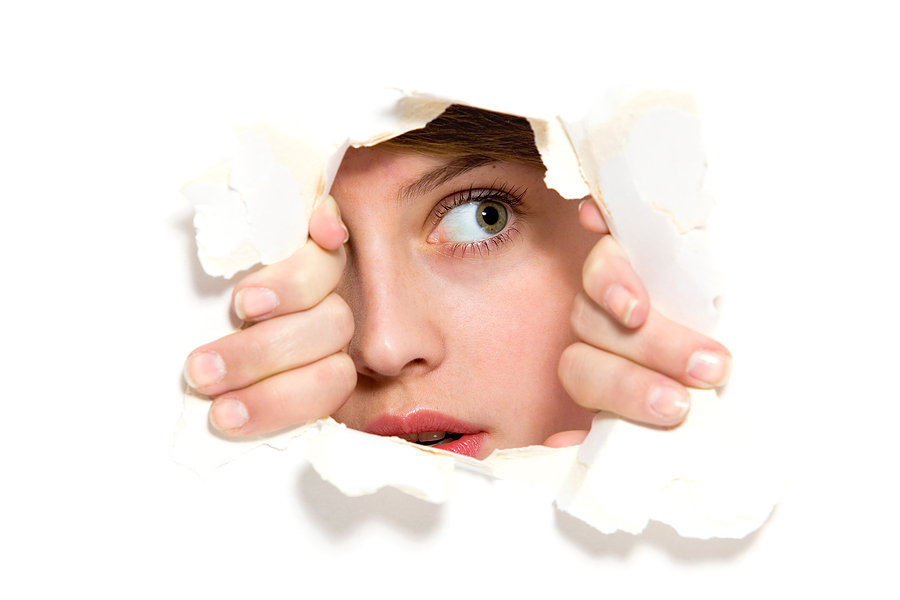 Fear of looking people in the eye
Fear of looking people in the eye Although this type of phobia delivers a minimum of discomfort, it is still necessary to deal with it. After all, if you do not directly look the interlocutor in the eye, then he may think that you simply do not want to conduct a dialogue with him.
Psychologists' advice:
- Exercise regularly. To do this, stand at the mirror several times a day and try to look at your reflection for as long as possible.
- Give yourself the right attitude. You must realize that the look of a person, albeit dissatisfied, will not particularly harm you.
- When communicating with an unfamiliar person, try to control your breathing and at the initial stage you can temporarily look at the bridge of your nose.
- When walking down the street, never take your eyes off passers-by, especially if they are the first to start looking at you. Thus, you will train your tenacity of sight.
- Train your peripheral vision. This will help you stay calm all the time, and you will be able to look into the eyes of the interlocutor for as long as possible.
Fear of strangers, strangers - xenophobia: symptoms and treatment
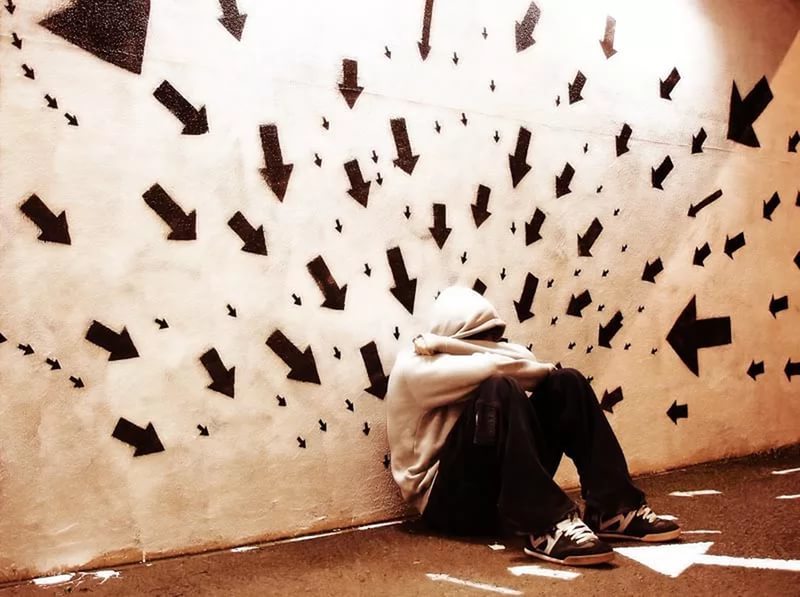 Fear of strangers, strangers
Fear of strangers, strangers Until recently, xenophobia was considered a feature of character or mentality, so people with this problem were not considered sick. But more recently, this disorder has been considered a deviation, and psychologists have begun to try to correct the behavior of a person with such a problem.
Symptoms of xenophobia:
- Hostility towards people of another nation or religion
- Reluctance to contact people with a different skin color
- Fear of encountering members of a particular group of people
- Panic when dealing with a person of a different nation or skin color
Perhaps xenophobia is the only behavioral deviation that lends itself very well to correction. If a person does not have other mental disorders and his emotional state is normal, then in order to get rid of this problem, you will need to attend literally a couple of specialized trainings or group conversations.
As practice shows, if a psychotherapist manages to reach out to the subconscious of his patient, then he quickly develops tolerance towards representatives of different religious groups and foreigners.
Fear of old people - gerontophobia: how to get rid of?
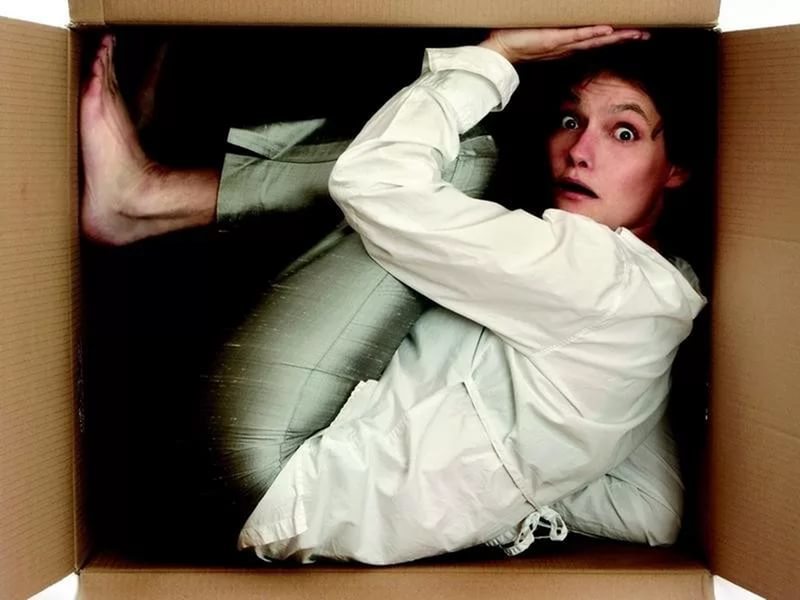 Fear of old people
Fear of old people For most people, old age is associated with loneliness, health problems, and not so much. beautiful body. Of course, while we are young and full of energy, we don’t think much about what will happen to us when we turn 60 and 70. But still, no matter how well our life develops by the age of 40, we begin to think more and more often about the inevitability of physical of death.
For some people, such thoughts become an obsession and they develop a mental illness called gerentophobia. People in whom this pathology progresses very quickly try to accessible ways delay old age. Most often, they become regular patients of plastic surgeons, various kinds of healers and homeopaths. It seems to them that in this way they will be able to prolong their youth and, most importantly, delay their death.
- Get Cognitive Behavioral Treatment
- Do breathing exercises
- Relax a couple of times a week
- Watch positive films and read books that do not strain your psyche
- Try to convince yourself that old age can be beautiful too.
Fear of fat people
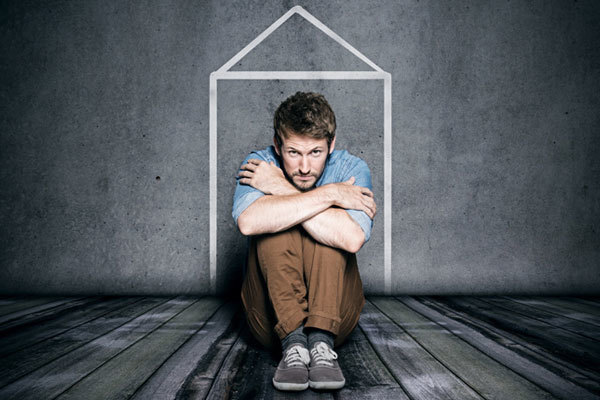 Fear of fat people
Fear of fat people - As you probably already understood, modern man is quite prone to various phobias. And some of us are looking for a problem where the rest of us do not see it. For example, some people, for no apparent reason, have a fear of overweight men and women. Most often, this is manifested by internal discomfort, disgust and unwillingness to come into contact with a person who is overweight.
- Now let's see what this phobia is based on. Since childhood, we have been imposed the opinion that only a thin and fit person can be considered beautiful. Therefore, if we see a fat person in front of us, then this immediately causes negative emotions in us. Mentally healthy people calm down immediately after moving away from the object of irritation.
- The same men and women who do not have a completely stable psyche, as a rule, get hung up on this and begin to shun fat people. As for how to get rid of this problem, this can be done with the right attitude. You must remember that fullness is not transferred by touching, hugging and kissing, so if you talk to a plumper or just look into her eyes, then your weight will definitely not increase.
Fear of a particular person
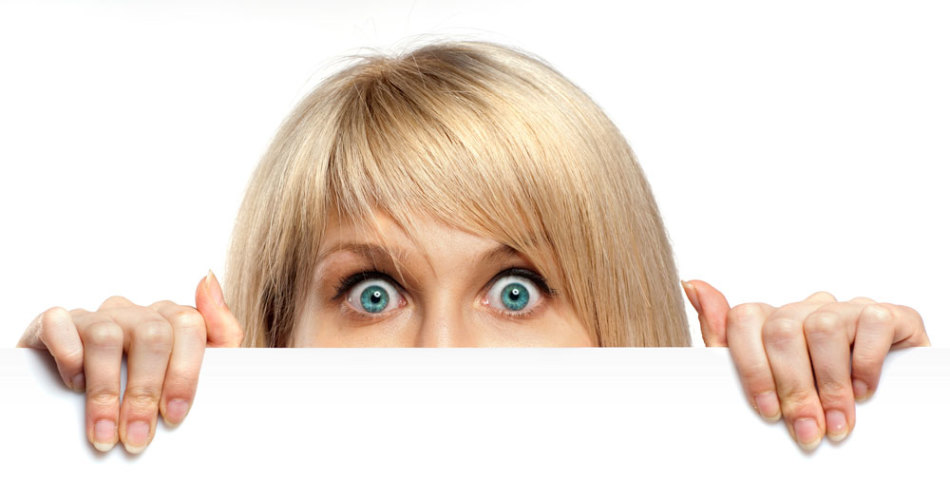 Fear of a particular person
Fear of a particular person - The fear of a particular person is a specific phobia that appears as a result of a sufficiently strong negative emotional stress. You can see or even just learn about some terrible act committed by a certain man or woman, and your subconscious mind will begin to project this situation onto you, thereby causing a panic fear of the one you often think about.
- It is for this reason that when you meet this person, you will feel quite strong discomfort, which will manifest itself as an increase in pressure, dry mouth and trembling of the limbs. If you notice these symptoms in yourself, then immediately seek help from a specialist. If you do not do this, it is likely that your phobia will progress and eventually you may even develop paranoia.
Fear of redheads
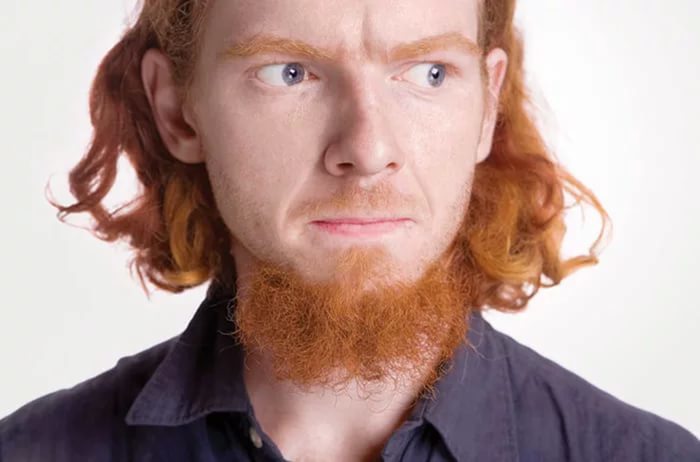 Fear of redheads
Fear of redheads The fear of redheads is nothing but gingerphobia. In this case, a panic fear in a person appears simply because he sees red hair. The most interesting thing is that due to strong fear, the patient may not even understand the man or woman in front of him. The only thought of a person prone to such a disease is the desire to distance themselves from the source of irritation as quickly as possible. Psychologists have not yet been able to determine what caused the appearance of this problem.
Some argue that this is due to the bright hair color, others say that the reason is the behavioral characteristics of redheads. But in order not to provoke this phobia, you must remember one thing - this disorder, like any other, requires immediate correction. Proper therapy will not allow the disease to worsen even in the most short time will get you out of trouble. If you do not treat gingerphobia, then it will develop into gingerism and then, along with fear, you will have a desire to do some harm to the red-haired person.
Fear of drunk people
 Fear of drunk people
Fear of drunk people - This pathology, like most of our phobias, appears in our childhood. Most often, the cause of its appearance is the unrestrained drunkenness of parents or someone close to them. Scientists have shown that if Small child every day he sees a very drunk and inadequate person in front of him, this forms a lot of negative emotions in him, which make themselves felt when he grows up.
- Most often this is manifested by disgust for drinking people. A person with this phobia fears and hates them at the same time. As a rule, this mental disorder manifests itself as closeness, excessive suspicion and irritability. And most importantly, the patient will feel fear even if the alcoholic does not show aggression.
- If you want to get rid of pathology in the shortest possible time, then find a qualified specialist who will help you put your emotions in order. If you learn to block negativity at the very initial stage of its inception, then it is quite likely that you will generally stop responding to people who have drunk.
All human phobias in the world have their own definition. More information about their name and meaning can be found in this article.
Nowadays, phobias do not surprise anyone for a long time and have a scientific medical explanation. The reaction in the form of fear to any irritant is the explanation that is given to a phobia in psychiatry. Studies have shown that almost everyone has their own fears and concerns, called phobias.
Unfortunately, a phobia, or, in simple terms, fear that appears in certain situations, does not lend itself to a logical explanation, and therefore it is more uncontrollable. For example, people with aquaphobia, for completely incomprehensible reasons, are afraid to swim, and people with eichmophobia avoid sharp objects.
Many believe that it is impossible to cure a phobia, but in fact it can be treated, but only in the very initial stages. If you "run" it, then over time it will become stronger ...
What are the phobias / fears of a person - a list in alphabetical order
All fears and phobias of a person can be filtered alphabetically, by sign and related to something. Let's figure out together what the peculiarity of each of.
Anthropophobia is a form of social phobia, expressed in the panic fear of people. The name comes from the Greek words anthropos - "man" and phobos - "fear". One of the most severe panic disorders, since human psychology is inseparable from society.
The peculiarity of this anxiety-phobic disorder is that there is a fear of any people, and not just them. large cluster. There is an obsessive desire to avoid any contact with them.
Equally typical for both men and women. Usually develops in childhood or adolescence. Accompanied by low self-esteem, suspiciousness, intolerance to criticism, neurotic character. This phobia is not uncommon. Many people are not comfortable when others are around, violating their personal space. They try to isolate themselves from society as much as possible, they spend almost all the time alone. Anthropophobia is a disease of residents of large cities. Overcrowding, lack of personal territory, high dynamism of events have a devastating effect on the psyche of an impressionable person.
The greatest fear provokes communication with strangers, but sometimes relatives and relatives can cause disturbing tension. The patient is convinced that among people his health and life are under threat. One of the varieties of such a phobia is the fear of falling and being crushed by other people, contracting an incurable disease, or being attacked.
What causes persistent phobia?
Fear of people, according to psychologists, is not the result of any one reason. Like most anxiety-phobic disorders, it originates in early childhood and is an exaggerated psychological defensive reaction of the body to various stimuli:
- aggressive behavior of adults around the child;
- psychological suppression of the child as a person;
- violence;
- presence in certain frightening situations (mass brawl, terrorist attack).
An anxious, suspicious child withdraws into himself, is left alone with his fear. The psychology of children is such that subsequently the frightening moment is forgotten, and withdrawn behavior becomes a habit. He stops trusting others. Lack of communication skills causes emotional tension and makes you hate all people. During puberty, such behaviors become noticeable to other adolescents, turning the child into an object of ridicule, and further asserting his fear. Training and labor activity, which in most cases require communication, become either unbearably painful for the patient, or completely impossible.
Not always the panic fear of people is preceded by psychological trauma. An important role in the development of anthropophobia is played by heredity and individual character traits. If the family has already encountered cases of anxiety-phobic disorders, then the likelihood of panic attacks is 50%.
Psychology knows cases when anthropophobia develops in people who have undergone a radical change in appearance. So, a woman who enlarges her breasts will experience a feeling of obsessive anxiety next to the owners of a small bust. And a fat man who has lost several tens of kilograms will experience persistent horror at the sight of fat people.
There is a dependence on the development of fear in people with bipolar disorder. In practical psychology, there are cases when anthropophobia is hidden under the guise of autism and vice versa.
Signs of an anxiety disorder
Anthropophobia has a number of characteristic symptoms that make up an anxiety-phobic syndrome:
- cognitive symptoms. Fear of people causes an irrational persistent horror in a person at the mere thought of the need to talk or meet with someone.
- vegetative symptoms. Sweating, hand tremors, palpitations, numbness, asthma attacks, diarrhea, vomiting, redness of the skin of the face, red spots on the skin of the chest, hands. All these symptoms, in turn, only increase the panic.
- compulsive behavior. Often a panic attack is accompanied by obsessive movements. Such actions are called compulsive and have a ritual, protective character for the patient. He, as it were, protects himself by performing the same type of actions in certain situations (for example, he counts passers-by or pats his hand in some rhythm).
- The psychology of avoidance. A phobia makes you wary of any situations in which contact with other people is possible. It is noticed that a person experiencing panic avoids looking into the eyes of the interlocutor. Anthropophobia can manifest itself in different ways. Some are afraid only of small children, others avoid communication with older people. Someone cannot be near those who wear a beard, who are fat, who are red or bald. But the majority still experiences fear, up to panic attacks, in front of all people, regardless of age, gender or other characteristics. Touches, loud speech, an attentive or condemning look, addressed to an anthropophobe, cause persistent horror.
If this phobia cannot be recognized and treated in time, then a favorable environment appears for the development of various neuroses and depression. The inability to build a personal life, career and friendships makes people seek solace in addiction to alcohol or drugs. In severe cases, when the patient does not have the strength to fight his horror, suicide attempts may be made.

Anthropophobia is not as harmless as it seems. It can be dangerous to health and life. If the patient becomes ill on the street, he will do his best to avoid the necessary and offered ambulance.
How to beat panic?
The problem of treating fear is vicious circle into which the patient enters. His fear of people does not allow him to seek help from doctors. The lack of social communication skills leaves the anthropophobe alone to deal with their problems.
There is no need to have illusions that a person will outgrow fear, and anthropophobia will pass on its own after some time. Only adequate treatment, based on the correct use of psychology and psychotherapy, can bring relief and get rid of panic attacks.
Treatment usually begins with finding out the cause of the phobic anxiety disorder. The doctor talks with the patient, analyzing almost every moment of life. Revealing the psychology of a person's experiences, one can understand what hinders his normal socialization.
Good results are obtained by a widespread complex form of psychotherapy - cognitive-behavioral. It includes two approaches:
- the principle of correction of illogical, inappropriate thoughts and stereotypes of the anthropophobe;
- the principle of changing human behavior by encouraging communication with people and the lack of reinforcement of unwanted reactions.
Additionally, an indirect effect on the human subconscious is used with the help of Ericksonian hypnosis.
One of the components of getting rid of anthropophobia as soon as possible is auto-training and self-study to overcome obsessive anxiety. Taking gradual steps to help you socialize will greatly improve your quality of life. Say hello to a neighbor, smile at a passerby, start using public transport- all this will bring you closer to recovery.
With the categorical refusal of an anthropophobe from psychotherapy, drug treatment is used. Drug therapy is aimed at eliminating anxiety, panic attacks, depression. Disadvantages of drug treatment:
- no impact on the causes of the phobia;
- possible withdrawal syndrome.
It is necessary to deal with a sudden attack with the help of relaxation techniques. Breathing exercises help well: slow deep breaths and exhalations.
Attentive attitude on the part of relatives and friends, tolerance towards the patient will help to overcome his feeling of self-doubt. The expectation of a “hit” from loved ones and, as a result, the fear of them will gradually disappear. Trust and working together to overcome the fear of people will help to establish a normal social life.
Anthropophobia (fear of people)- a disease that has a social character, expressed in fear of people and in the desire to stay away from them as far as possible. This phobia can be accompanied by neuroses and various obsessive states.
First of all, it is important to understand what a phobia is in its essence. Phobia- this is an extremely strong, pronounced fear that does not leave a person. In certain situations, it escalates, and at the same time it cannot be explained logically. For the most part, they are completely unmotivated, unable to harm the people around them. At the same time - a mental disorder, each case of which is caused by certain reasons. Such states manifest themselves in the form of irrational fear.
As already mentioned, anthropophobia is the fear of people. This disorder is very common. Many people feel some discomfort when strangers approach them, while trying by all means to protect their personal space. People who suffer from social fears, as much as possible they try to be alone with themselves, avoiding society. The comfort zone is very important for them, they leave it extremely rarely and do not come into contact with others. Public opinion and the point of view of loved ones do not matter to them. Nor do they care about their place in society.
Causes of anthropophobia
A field that studies the problems of fear of people cannot give a definitive answer about what causes a person to get sick. There is a point of view that it lies in what happened to a person in early childhood. This may be one of many factors: resentment, violence, fear, lies, various psychological situations that arose when parents achieved unquestioning obedience. As a result, children can withdraw into themselves, such behavior develops into a habit, and then becomes a character.
It is difficult for such people to trust anyone, they become lonely, often indecisive, and may even hate others. They establish a distance between themselves and society, which only increases with time. Of course, not every psychological trauma makes a person an anthropophobe. Much depends on the psychological traits of the individual, traceable throughout life. When emotional upheavals are absent, anthropophobia is the exception rather than the rule.
Fear of people is a youth phobia. But there are cases of the onset of the disease at an older age. This may be the result of stress, overwork, depression, attacks, theft. In such cases, the manifestation of anthropophobia can be a kind of defensive reaction. Residents of large cities are most susceptible to the disease. This is facilitated by the level of population density, the dynamism of people. It is also important to reduce the personal living space of the city dweller.
Symptoms of fear of people
Anthropophobia has many different manifestations. Its features have different distinctions: a phobia of preschoolers and schoolchildren, a phobia of the elderly, a phobia of clean-shaven people, a phobia of bearded people, a phobia of mustachioed people. There is a phobia of absolutely all people. Anthropophobia can manifest itself in relation to strangers, newly appeared people; there is a phobia of touching strangers, a phobia of communication and conversation with a person, a phobia of drunks, a phobia of red-haired people, a phobia of overweight people, a phobia of loud sounds made by people, a phobia of looking into the eyes, a phobia of crowds of a large number of people (agoraphobia).
The symptoms of such a disease are very clearly manifested in the fear of public situations: passing exams, reading a report, speaking in front of any audience and in front of mass gatherings of the people. More complex cases are manifested in the self-elimination of a person, in the refusal to communicate and interact with people. Most of all, patients are afraid of prying eyes and condemnation. Volitional efforts can help overcome fears only with a mild form of phobia. If the case is neglected, the signs intensify. Even the most crowded place causes aggression in the anthropophobe, involuntary trembling of hands and feet, increased heartbeat, and profuse sweating.
How to get rid of anthropophobia (treatment)
The fear of people as a phobia is not as harmless as it might seem with a cursory acquaintance with the problem. It causes neurosis in a person. The antisocial behavior of a patient with anthropophobia is more and more pronounced every day. The main difficulty of such patients is the inability to ask for help, because they do not know how to communicate with people around them. Often the disease leaves a person alone with their own anxieties. Many do not even admit to themselves that they are ill, and in case of poor health on the street, they often refuse necessary assistance passersby.
If such a diagnosis is made, one should not be under the illusion that over time the problem will resolve itself. The disease intensifies, other mental disorders are added. This explains the importance of timely access to . A competent specialist will understand the causes of your disease.
Treatment of a phobia begins with a conversation between the patient and the doctor. The next task is to quickly learn the right contacts with others. The success of therapy largely depends on the speed of awareness of this aspect. The desire to help yourself is also very important. Therapy for fear of people is aimed at combating personal phobias and overcoming them on a daily basis. An example of steps: calmly thank the seller, smile at a stranger, without being nervous, ask a passerby for an address. All these are steps towards the socialization of the patient. The next step is to make friends with at least one person. When this happens, there is a chance that over time the patient will improve his health and forget about the disease.
Phobias related to fear of people
Often phobias are directed for representatives of the same nationality. An example would be:
- Japanophobia (fear of the Japanese);
- Judophobia (fear of Jews);
- anglophobia (fear of the English);
- Francophobia (fear of the French);
- teutophobia (fear of the Germans);
- Russophobia (fear of Russians);
- hellophobia (fear of the Greeks).
Sometimes an irrational fear is felt in front of relatives (for example, before the mother-in-law or mother-in-law). In addition, in this category there are anxieties and disorders based on phobia based on gender, sexual orientation, age. Here are some of them:
- androphobia (fear of men);
- gynophobia (fear of women);
- ephebiphobia (fear of teenagers);
- heterophobia (fear of heterosexuality);
- parthenophobia (fear of virgins);
- homophobia (fear of homosexuality).
A very severe and painful phobia among those indicated is pedophobia (fear of communicating with children). Most often, it is based on a pathological fear of diagnosing in oneself the symptoms of pedophilia, due to a distorted moral prohibition. This disease makes it necessary to minimize or completely stop any contact and communication with children, to clearly demonstrate their negative attitude towards each child.
In addition, the disorder is complemented by a focus on adults who, in the patient's opinion, communicate too actively or incorrectly with children. Pedophobia needs mandatory medical intervention, since it is often one of the symptoms of a mental illness dangerous to society.
In the following group, fears are indicated, which are based on the rejection of certain people because of the peculiarities of their appearance, such as:
- peladophobia (fear of bald people);
- pogonophobia (fear of bearded men);
- teratophobia (fear of ugly people);
- caliginephobia (fear of beautiful women).
Psychiatry has described quite a few a large number of cases of coulrophobia - panic fear of clowns. For the most part, the onset of the disease is caused by the unpredictable actions of the clown, while at the subconscious level, their behavior is perceived as a manifestation of a person’s mental illness. It is no secret that the fear of what cannot be predicted and what cannot be controlled is inherent in a large number of people.
It is essential to overcome these phobias. But they can be completely cured only under the guidance of specialists.
Other fears of people:
- wiccaphobia - fear of sorcerers;
- gerontophobia - fear of old people;
- heterophobia - fear of the opposite sex;
- demophobia - fear of the crowd;
- hierophobia - fear of priests;
- xenophobia - fear of strangers;
- Pogonophobia - fear of people with a beard;
- social phobia - fear of public actions;
- ephebiphobia - fear of youth.
A phobia is a psychological problem that can be corrected. As with any other disease, the rule applies: the sooner therapy is started, the higher the chances of success without complications.



